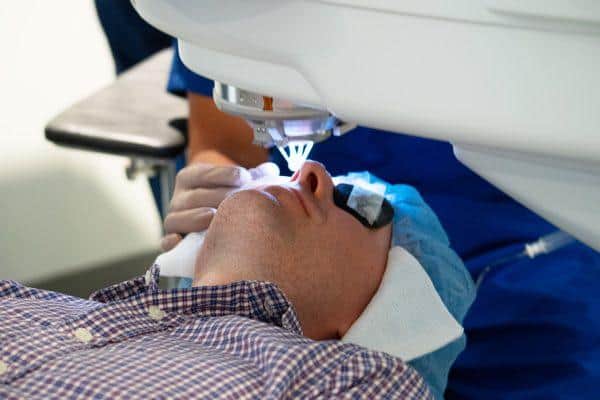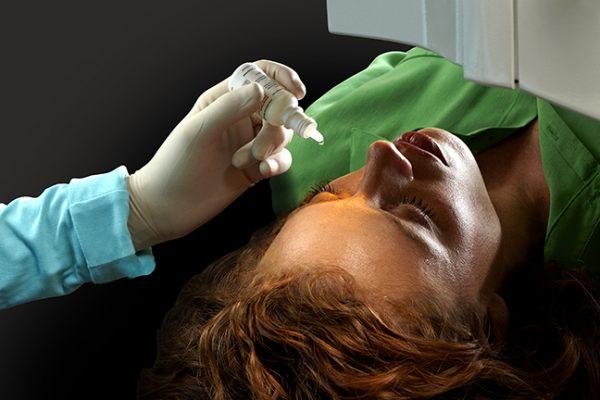
LASIK
LASIK (Laser-Assisted-In-Situ Keratomileusis) is currently one of the most frequently performed elective procedures in North America. The LASIK procedure is designed to correct nearsightedness, farsightedness and astigmatism by using an excimer laser to reshape the cornea. LASIK is an outpatient procedure and takes 5-15 minutes per eye to complete.
The LASIK Procedure
Step 1: Making a protective flap
Your eye is numbed with drops. A protective corneal flap is created and gently lifted by the surgeon, revealing the inner corneal tissue. Because the flap preserves the surface layer of the cornea, discomfort following the procedure is minimized.
Step 2: Reshaping with the Laser
Computer-controlled pulses of cool laser light are applied to the inner layers of your cornea. The inner corneal layer is reshaped with the laser to mimic your contact lens or glasses prescription.
Step 3: Laying Back the Protective Flap
At the end of the laser treatment the surgeon gently replaces the corneal flap and carefully aligns it to its original position. It heals naturally and securely.
Some patients may feel slight irritation for a few hours, but most are quite comfortable after a nap and rest. Most LASIK patients usually see quite well the day following their procedure and may be able to resume most of their normal daily activities, but patients with higher prescriptions may recover more slowly. Although the speed of visual recovery depends on personal healing patterns, most patients notice dramatic visual results within the first few days following their procedure.

Custom LASIK
Custom LASIK is a procedure that enables the surgeon to further customize the conventional LASIK procedure to your individual eyes. Custom LASIK provides an additional level of data about your vision requirements using wavefront technology. A device called a Wavefront Analyzer measures the way light travels through your eye and compares it to an eye with perfect vision. This device then creates a 3-D wavefront map that is uniquely yours, in the same way that your “fingerprint” is unique to only you. This additional data is then used by your surgeon to customize the LASIK procedure to your individual vision requirements.
In clinical studies, Custom LASIK has been able to provide patients with:
- A greater chance of having 20/20 vision
- The potential for better vision than is possible with contacts or glasses
- Less incidence of glare and halos
- Potentially better overall vision, even at night

PRK
PRK (photorefractive keratectomy) is an elective, outpatient procedure to improve vision and reduce or eliminate the need for eyeglasses or contact lenses. In the PRK procedure, the surgeon utilizes the excimer laser to reshape the curvature of the eye for patients with nearsightedness, farsightedness and astigmatism. Prior to LASIK, PRK was the most commonly performed laser vision correction procedure. PRK differs from LASIK as no flap is created during the PRK procedure. PRK may be suitable for people with larger pupils, thin corneas, dry eyes or other corneal issues.
THE PRK PROCEDURE
Step 1: Prepare cornea for laser treatment
To accomplish the reshaping, the surgeon first removes the protective surface layer (epithelium) from the cornea. The epithelium is regenerated within three to five days.
Step 2: Reshaping with the Laser
Computer-controlled pulses of cool laser light are applied to the inner layers of your cornea. The inner corneal layer is reshaped with the laser to mimic your contact lens or glasses prescription.
Step 3: Bandage Contact Lens
A clear “bandage” contact lens is placed on the cornea to protect it and additional eye drops are applied. The bandage lens is usually worn for three days, then removed by your doctor.
After the PRK procedure, your eye may feel irritation or a foreign body sensation for a few days, but this discomfort can usually be effectively managed with medications. With PRK, prescription eye drops are used for several weeks to months following the procedure.
Contact Us
Hours of Operation
Monday: 8am-5pm
Tuesday: 8am-5pm
Wednesday: 10am-7pm
Thursday: 8am-5pm
Friday: 8am-5pm

